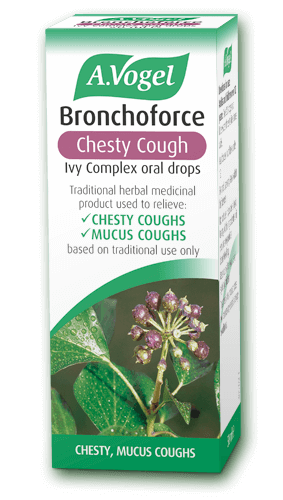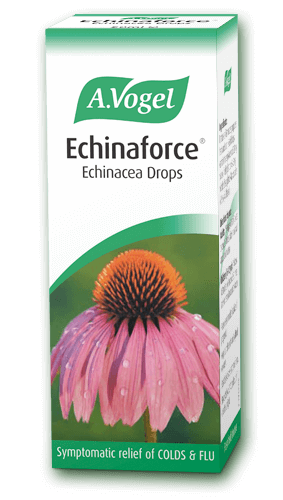An introduction to bronchitis & wheezing
Bronchitis is a condition that occurs when an irritant or infection causes inflammation and swelling to the lining of the bronchial tubes (the tubes that carry air to and from your lungs). As the irritated membranes of the bronchi swell and grow thicker, the tiny airways of the lungs become restricted.
This inflammation can also cause the membranes in the lining to start producing excess mucus, clogging the bronchi and restricting airflow to the lungs further. This can trigger coughing, the most common symptom of bronchitis, as well as mild wheezing.
Why does bronchitis cause wheezing?
Wheezing is a raspy, whistle-like sound that can occur when there is swelling in the airways, making it more difficult to breathe.
With bronchitis, as the bronchial tubes become inflamed and swollen and excess mucus is produced, the airways to the lungs become narrowed and clogged and wheezing occurs as air squeezes through these narrowed passages.
Wheezing is often accompanied by shortness of breath, and is typically heard when breathing out; however, it can also occur when breathing in.
Wheezing usually only occurs in severe cases of acute bronchitis and should subside once the inflammation restricting airflow has eased, which is typically after only a few days or weeks at the most.
If wheezing persists, it is important to contact your doctor, as it may be a sign of other lung conditions such as asthma, pneumonia or chronic bronchitis.
It is also important to contact your doctor if wheezing is accompanied by:
• Difficulty breathing
• Rapid breathing
• Feeling faint
• Chest pain
• Looking paler than normal or blue
Are there any self-help measures?
There are several measures you can take to reduce the inflammation and open your airways to ease wheezing. You should:
Stay well hydrated: Drink plenty of water, juice, herbal teas and broths. This can help to thin out and loosen mucus in the air passages. Ice cold drinks should be avoided as they can further aggravate your already irritated bronchial tubes.
Drinking warm fluids can not only help to hydrate your body, they can also soothe your irritated airways to help ease wheezing. Herbal teas such as ginger, chamomile and liquorice teas are all good options.
Watch your stress levels: When it comes to wheezing it’s important to stay relaxed and avoid stress. Tensing up will only worsen your breathing difficulties.
Use a humidifier or vaporiser: The most effective way to ease wheezing is by breathing in warm, moist air. Inhaling moist air delivers moisture deep into the bronchial passages, where it helps to loosen mucus, making it easier to expel, as well as hydrating the bronchial tubes, which helps to soothe irritation.
A vaporiser works by heating water until it turns into hot steam, whilst a humidifier adds moisture to the air. This helps the bronchial tubes stay moist, which helps to reduce the inflammation causing the wheezing.
Use steam: Other steam methods to clear your air passages include creating a steam tent by lowering your face over a bowl filled with hot water, placing a towel over your head and bowl and inhaling the steam, as well as taking a hot shower or bath. The heat and steam from the hot water can help ease your wheezing by relaxing air passages and soothing your chest.
You can add a few drops of peppermint or eucalyptus essential oil to your steam tent, to aid in soothing your airways further. These can also help to loosen and thin any mucus that may be causing congestion in your airways.
Avoid cold air: Wheezing can be further aggravated by exposure to cold air, which causes your lungs and airways to tense and restrict even more. Wear scarves during cold weather.
Avoid other irritants: Chemical fumes from paint, household cleaners and air fresheners, as well as smoke, dust and pollution can all irritate your already irritated bronchial tubes causing your airways to restrict further and so worsen bronchitis symptoms including wheezing.
Reduce mucus congesting your airways: Excess amounts of mucus often occur as your condition progresses, which may restrict airflow to your lungs and cause wheezing. It is therefore important to take measures to help your body reduce mucus production and thin mucus to allow you to cough it up easier. Take a look at our self-help measures for lots of mucus reducing tips.
Are there any herbal remedies that can help?
Persistent coughs are often one of the most prominent symptoms of bronchitis. These coughs may or may not be accompanied by the production of mucus and may also go hand in hand with wheezing.
 If you struggle with a chesty or mucus cough and suspect this could be contributing to wheeziness, use the herbs Ivy and Thyme found in Bronchoforce to help ease your symptoms.
If you struggle with a chesty or mucus cough and suspect this could be contributing to wheeziness, use the herbs Ivy and Thyme found in Bronchoforce to help ease your symptoms.
Ivy is naturally anti-spasmodic and can work well to help loosen any stubborn mucus, whilst thyme is gently anti-septic, helping to thin the mucous and making it easier to expel.
 Next, if an underlying infection is likely to be causing the chesty cough (this is particularly common in cases of acute bronchitis), this could also be contributing to additional symptoms such as a shortness of breath.
Next, if an underlying infection is likely to be causing the chesty cough (this is particularly common in cases of acute bronchitis), this could also be contributing to additional symptoms such as a shortness of breath.
If this is the case, Echinaforce in combination with Bronchoforce, may be a good option for you. Echinaforce can help to minimise the duration and severity of your symptoms, whilst also supporting your immune system.
What about conventional medicines?
To ease mild wheezing associated with acute bronchitis, your doctor or pharmacist may recommend some of the following to reduce inflammation and open your airways:
A bronchodilator inhaler: This can help to relax and open up the air passages and ease wheezing. This will usually only be recommended by your doctor in severe cases of acute bronchitis.
Expectorants: These can help loosen and thin any mucus that may be restricting the airflow to your lungs.
Antibiotics: These will only be prescribed if your doctor thinks your acute bronchitis is being caused by a bacterial infection.
For chronic bronchitis, inhaled bronchodilators and corticosteroids are often prescribed. Bronchodilators open up your airways to allow more air to pass through, whilst corticosteroids help to reduce airway swelling.








